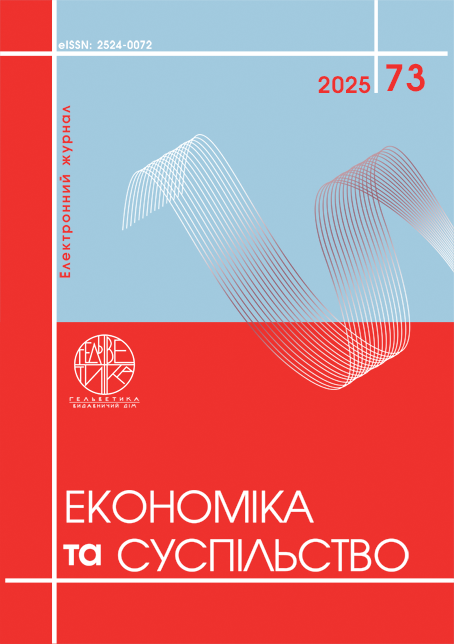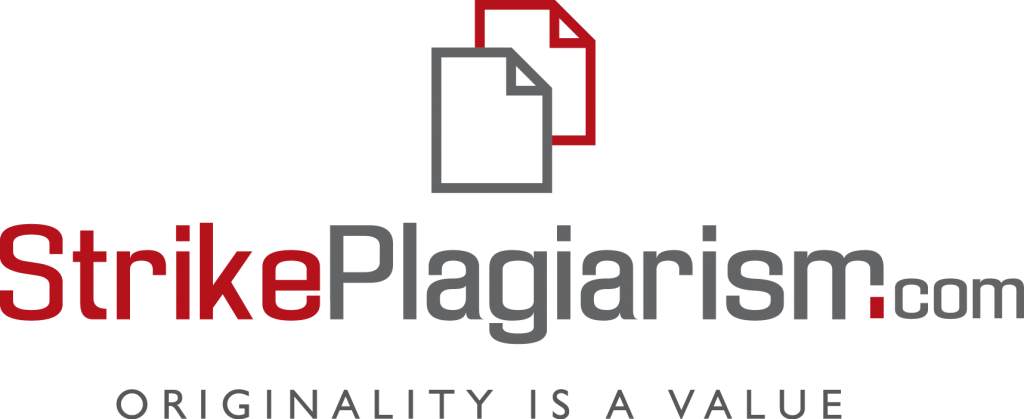DEVELOPMENT OF A MECHANISM FOR IMPLEMENTING HR AUDIT AS A COMPANY RISK MANAGEMENT TOOL
Abstract
The development of a mechanism for implementing HR audit as a company risk management tool addresses an urgent need for businesses to strengthen their resilience in an increasingly volatile environment. The purpose of this study is to design an integrated approach that systematically incorporates HR audit into risk management practices. The relevance of the topic lies in the growing demand for companies to ensure compliance with legal standards, optimize human resources processes, and enhance overall organizational stability. The methodology is based on a multi-stage system, including assessment of HR documentation, evaluation of personnel alignment with strategic goals, identification of risks related to human resources, and provision of expert consultations. Particular attention is paid to defining key components of the HR audit system, such as financial, operational, informational, compliance, physical, and strategic dimensions. The research proposes detailed stages of implementing the HR audit mechanism: preparation, information gathering and analysis, risk assessment, recommendation development, and monitoring of corrective actions. The results show that systematic HR auditing not only reduces legal and operational risks but also improves employee engagement, optimizes resource allocation, and strengthens corporate competitiveness. Practical significance lies in providing companies with a structured and proactive method to detect weaknesses in human capital management, minimize threats before they escalate, and maintain a sustainable strategic advantage. Through the proposed mechanism, businesses can create more adaptive and resilient HR systems that align workforce development with dynamic market requirements and ensure continuous organizational improvement. Overall, the HR audit implementation mechanism serves as an essential component of modern risk management, fostering a culture of accountability, transparency, and strategic foresight within the corporate environment.
References
Armstrong, M. A handbook of human resource management practice: Handbook, 9th ed. London: Kogan Page Publishers, 2006. 406 p. https://shorturl.at/nB7W4
Pająk, W. Personnel audit process. Business, Management and Education, 2012, vol. 10, no. 1, pp. 25–37. https://doi.org/10.3846/bme.2012.03
Sullivan, J. The New HR Analytics: Predicting the Economic Value of Your Company's Human Capital Investments: Handbook. New York: AMACOM, 2010.
Ulrich, D., Allen, J., Brockbank, W., Younger, J., Nyman, M. HR Transformation: Building Human Resources from the Outside: Handbook. In. New York: McGraw Hill, 2009. 257 p.
Група компаній «V.I.P. Consulting». 2024. URL: http://vipc.com.ua/ (дата звернення: 15.04.2025).
Донець М. Кадровий аудит на підприємстві: підготовка документів. Праця і зарплата, 2014, с. 6–12.
Жуковська В. Теоретико-методологічні засади кадрового аудиту. Вісник КНТЕУ, 2010, № 4, с. 48–56.
Крушельницька О. В., Мельничук Д. П. Управління персоналом: навчальний посібник для вищих навчальних закладів. Київ: Кондор, 2003. 296 с.
Михайліченко М.В., Рудик Я.М. Кадровий менеджмент: навч. посіб. К.: ЦП Компринт, 2017. 323 с.
Немченко В. В., Хомутенко В. П., Хомутенко А. В. Практичний курс внутрішнього аудиту: підручник. Київ: Центр учбової літератури, 2008. 240 с.
Олійник О. О. Аудит персоналу: навч. посіб. Рівне: НУВГП, 2016. 290 с.
Піронкова О. Кадровий аудит в умовах швидкого зростання фірми. Довідник кадровика, 2003, № 24, с. 81–82.
Романів С. Кадровий аудит: його сутність, завдання та основні елементи. Офіційний сайт Наукового клубу «Sophus». 2011. URL: http://sophus.at.ua/publ/2011_11_15_16_kampodilsk/section_6_2011_ (дата звернення: 15.04.2025).
Слівінська Н. М. Кадровий аудит як інструмент формування ефективної кадрової політики організації. Регіональні аспекти розвитку продуктивних сил України. 2011, Вип. 16, С. 74–77. URL: http://nbuv.gov.ua/UJRN/rarpsu_2011_16_15 (дата звернення: 15.04.2025).
Совершенна І. О. Кадровий аудит як інструмент підвищення результативності менеджменту та розвитку організації. Відкриті інформаційні та комп'ютерні інтегровані технології, 2013, № 59, с. 288–294.
Фріман Є. М. Організаційні засади аудиту персоналу при прийнятті кадрових рішень на підприємстві. Проблеми економіки, 2012, № 3, с. 151–154.
Armstrong M. (2006) A handbook of human resource management practice. 9th ed. London: Kogan Page Publishers. Retrieved from https://shorturl.at/nB7W4
Pająk W. (2012) Personnel audit process. Business, Management and Education, vol. 10, no. 1, pp. 25–37. https://doi.org/10.3846/bme.2012.03
Sullivan J. (2010) The New HR Analytics: Predicting the Economic Value of Your Company's Human Capital Investments. New York: AMACOM.
Ulrich D., Allen J., Brockbank W., Younger J., Nyman M. (2009) HR Transformation: Building Human Resources from the Outside In. New York: McGraw Hill.
Hrupa kompanii «V.I.P. Consulting» (2024) [V.I.P. Consulting Group of Companies]. Retrieved from http://vipc.com.ua/ (accessed: 15.04.2025).
Donets M. (2014) Kadrovyi audyt na pidpryiemstvi: pidhotovka dokumentiv [Personnel audit at the enterprise: preparation of documents]. Pratsia i zarplata, no. 6–12.
Zhukovska V. (2010) Teoretyko-metodolohichni zasady kadrovoho audytu [Theoretical and methodological principles of personnel audit]. Visnyk KNTEU, no. 4, pp. 48–56.
Krushielnytska O. V., Melnychuk D. P. (2003) Upravlinnia personalom: navchalnyi posibnyk dlia vyshchykh navchalnykh zakladiv [Personnel management: a textbook for higher education institutions]. Kyiv: Kondor. 296 p.
Mykhailichenko M. V., Rudyk Ya. M. (2017) Kadrovyi menedzhment: navchalnyi posibnyk [Human Resource Management: Textbook]. Kyiv: TsP Komprynt. 323 p.
Nemtchenko V. V., Khomutenko V. P., Khomutenko A. V. (2008) Praktychyi kurs vnutrishnoho audytu: pidruchnyk [Practical course of internal audit: textbook]. Kyiv: Tsentr uchbovoi literatury. 240 p.
Oliinyk O. O. (2016) Audyt personalu [Personnel audit]. Rivne: NUVGP.
Pironkova O. (2003) Kadrovyi audyt v umovakh shvydkoho zrostannia firmy [Personnel audit under conditions of rapid company growth]. Dovidnyk kadrovyka, no. 24, pp. 81–82.
Romaniv S. (2011) Kadrovyi audyt: yoho sutnist, zavdannia ta osnovni elementy [Personnel audit: its essence, tasks and main elements]. Ofitsiinyi sait Naukovoho klubu «Sophus» [Official website of the Scientific Club "Sophus"]. Retrieved from http://sophus.at.ua/publ/2011_11_15_16_kampodilsk/section_6_2011_ (accessed: 15.04.2025).
Slivinska N. M. (2011) Kadrovyi audyt yak instrument formuvannia efektyvnoi kadrovoi polityky orhanizatsii [Personnel audit as a tool for shaping an effective HR policy of an organization]. Retrieved from http://dspace.tneu.edu.ua/bitstream/316497/10107/1/Stattia%20AYDIT.pdf (accessed: 15.04.2025).
Sovershenna I. O. (2013) Kadrovyi audyt yak instrument pidvyshchennia rezultatyvnosti menedzhmentu ta rozvytku orhanizatsii [Personnel audit as a tool to improve management performance and organizational development]. Vidkryti informatsiini ta komp’iuterni intehrovani tekhnolohii [Open Information and Computer Integrated Technologies], no. 59, pp. 288–294.
Friman Ye. M. (2012) Orhanizatsiini zasady audytu personalu pry pryiniatti kadrovykh rishen na pidpryiemstvi [Organizational principles of personnel audit when making HR decisions at the enterprise]. Problemy ekonomiky[Problems of Economy], no. 3, pp. 151–154.

This work is licensed under a Creative Commons Attribution 4.0 International License.


